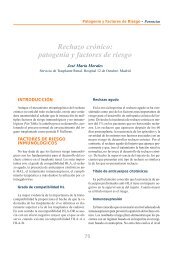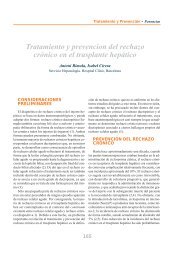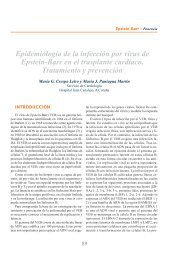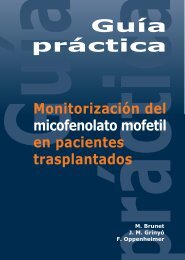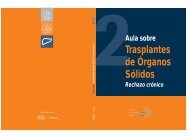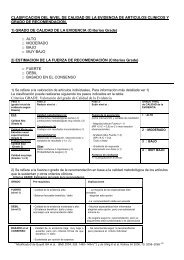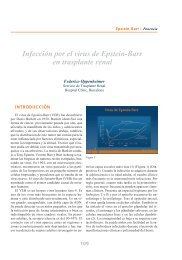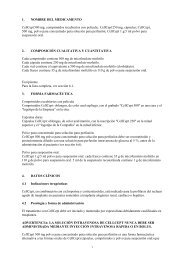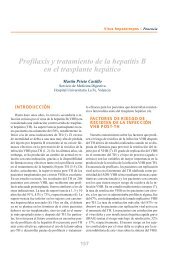Untitled - Roche Trasplantes
Untitled - Roche Trasplantes
Untitled - Roche Trasplantes
Create successful ePaper yourself
Turn your PDF publications into a flip-book with our unique Google optimized e-Paper software.
BIOPSIA DE PROTOCOLO EN EL TRASPLANTE RENAL<br />
The ground on which we have been able to build models of CAN is thus from histology<br />
and not from the clinical environment. Studies of biopsies taken in an attempt to diagnose<br />
clinical events are also uselessly misleading since they are biased by the clinical<br />
overlay that comes with the decision to undertake the biopsy. It is thus only from protocol<br />
biopsy studies that one can really build the conceptual models with which to test therapeutic<br />
interventions.<br />
Reports of long term protocol renal allograft biopsy series were scarce until the past five<br />
years or so. The longest series was published from our group in Sydney (REF JASN 66-79)<br />
in which 120 recipients of simultaneous pancreas and kidney transplant recipients were<br />
biopsied at 0, 3 and 12 months and then annually thereafter to ten years. Our series, like<br />
that from the Mayo Clinic (17) which was predominantly from living donor transplants, started<br />
with normal kidneys from young donors and very short cold ischemia times. We had<br />
previously published a shorter series of protocol biopsies taken from deceased donor grafts,<br />
which thus included the impact of preceding donor disease (9,18), while others have described<br />
the different impacts of varied immunosuppressive regimens (19-23).<br />
Chronic allograft nephropathy is the final common pathway of different causes of renal<br />
allograft damage. That damage may have started in the hypertensive donor or through<br />
cold ischaemia and reperfusion injury, through acute rejection, acute or chronic CNI nephrotoxicity<br />
and from sub-clinical rejection. It may be possible in a single biopsy to discern<br />
the relative influences of some of these factors, but in severe cases the biopsy is as<br />
uninformative as the “end stage kidney” that we are familiar with from native renal diseases.<br />
Our current working model is shown in Figure 1 and described below. We believe that it<br />
provides the foundation for understanding not only CAN, but also the relationships between<br />
the histological appearances and the clinical perspectives (2). The new genomic<br />
techniques for elucidating changes at the molecular level may also potentially be inculcated<br />
into explaining the model and the early evolution of CAN.<br />
Subclinical rejection<br />
Fibrosis of the kidney occurs in two separate phases (68), two thirds develops quite rapidly<br />
during the first year, with a slow and progressive accumulation beyond that time.<br />
Interestingly the interstitial fibrosis exceeds the tubular atrophy suggesting that it is related<br />
to more than simply the damage of tubules. The two strongest contenders for this effect<br />
are ischaemia-reperfusion injury and acute allograft immune response –acute rejection.<br />
In the Hannover protocol series of 258 patients (22) biopsied at 6, 12 and 16 weeks,<br />
CAN was present in 70 (37%) and absent in 120 at 26 weeks. The significant risk factors<br />
for CAN were receiving a deceased donor kidney, long cold ischaemia and acute rejection.<br />
In the Westmead series acute tubular necrosis was predictive for CAN and the use<br />
18




